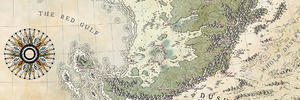that then is a 8 bit grayscale image
and you can not fit this
in a 8 bit image
it needs to be 16 bit signed from -650 to + 2560 meters
you really will DISLIKE the look of using a 8bit color depth on a DEM
it will LOOK terraced or like the "stepped pyramid"
as to worldmachine and Photoshop
i do on use Microsoft software and have not used a Microsoft Operating system in over 10 years
( well a few games and wilbur using WINE )
i kicked MS to the curb in 2004/2005
mostly Blender for for node generated noise functions ( mountains and valleys )
wilbur and GRASS/Qgis for time based erosion
(
r.landscape.evol & r.terraflow )
Gimp2.9.4 and Nip2 and Gmic( terminal software) for 16 and 32 bit HeightMaps
small map sets are a dime a dozen a 2048x1024 or 4096x2048 can be done in one or two days or a week depending on the details
but map sets in the 64565 x 32768 to 131072 x 65536 pixel range maps will take 6 months
the DEM is the easiest part and that will take time , coloring it takes a lot more time
for an example :
the reprocessing of the C1 Synthetic aperture radar data from the Magellan spacecraft at Venus
took 6 months for a 131072 x 65536 map
https://www.cartographersguild.com/s...l=1#post191775
you really can not do that and have it in a real mapping format
neither "Mercator" nor "simple cylindrical" can do that and have it "work" for a planet ,that would not be able to be geo-referenced
Parts can be mapped that way but not the whole
but i think you have a "concept" a bit off
i think you are thinking of the earth's tilt of 23.5 that causes the seasons
that is not the equator line
so expect a bit of time for all the work and a rather big price tag from whoever you get to do this
big maps are a LOT of work and can eat up drive space
( the messenger Mercury data i am working on is almost 1 terabit of drive space )





 [Tech Description Worldmachine]
[Tech Description Worldmachine]
 Reply With Quote
Reply With Quote








 , especially when you deal with potential client.
, especially when you deal with potential client.
